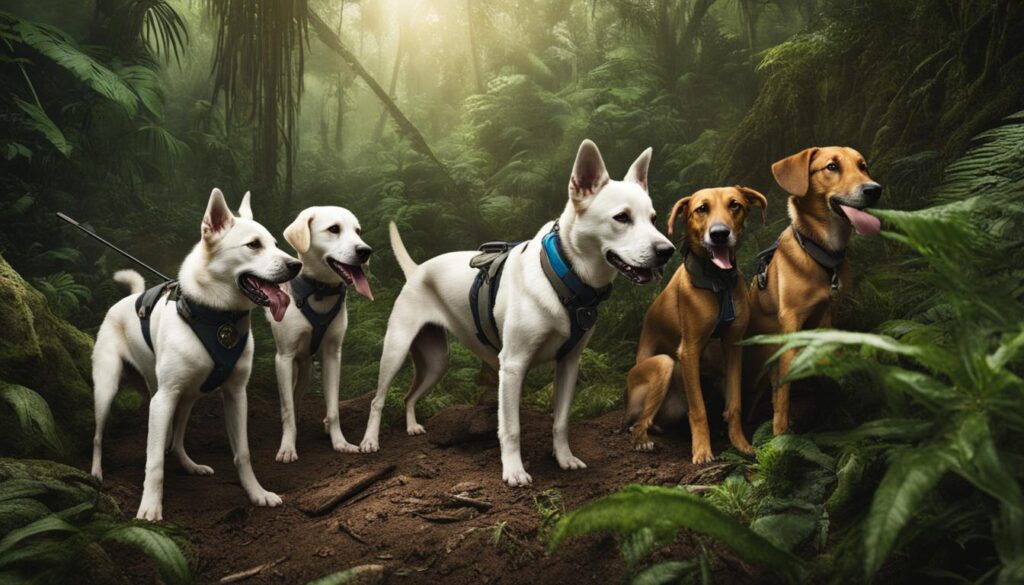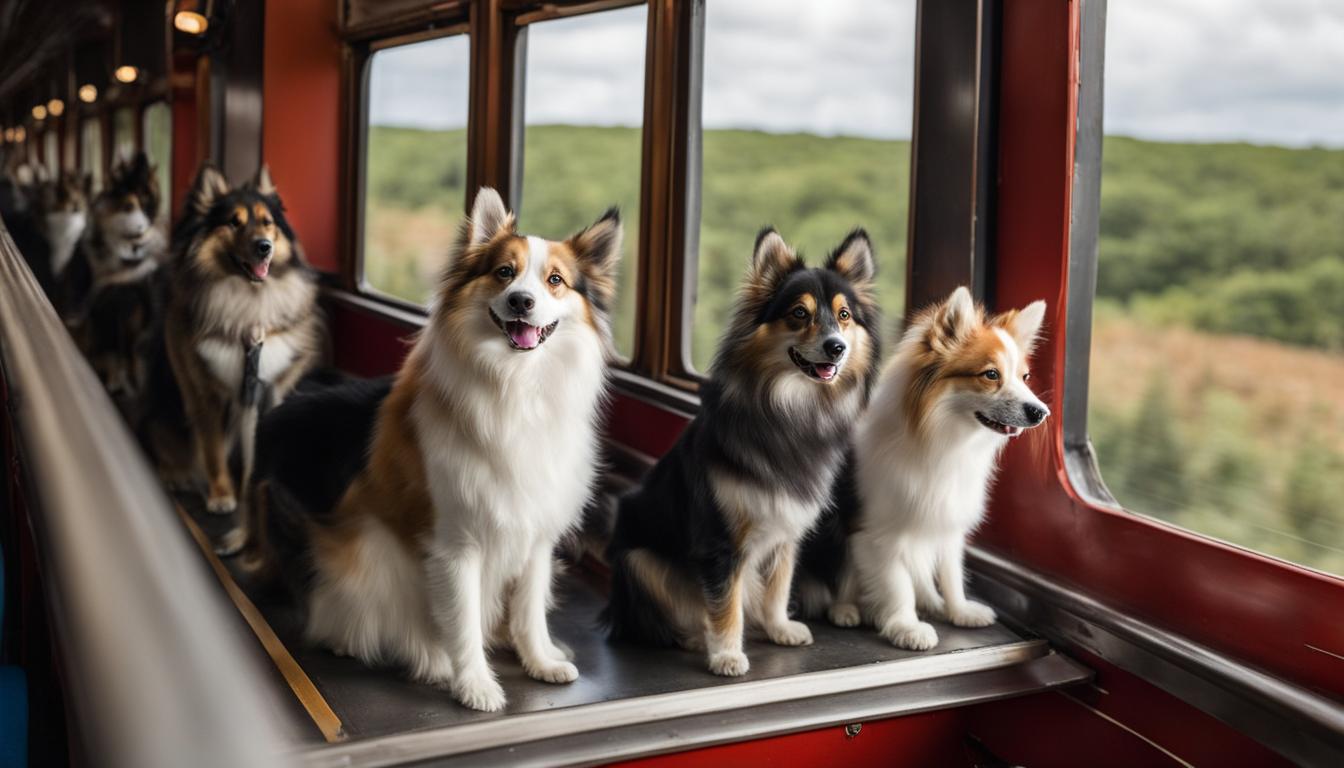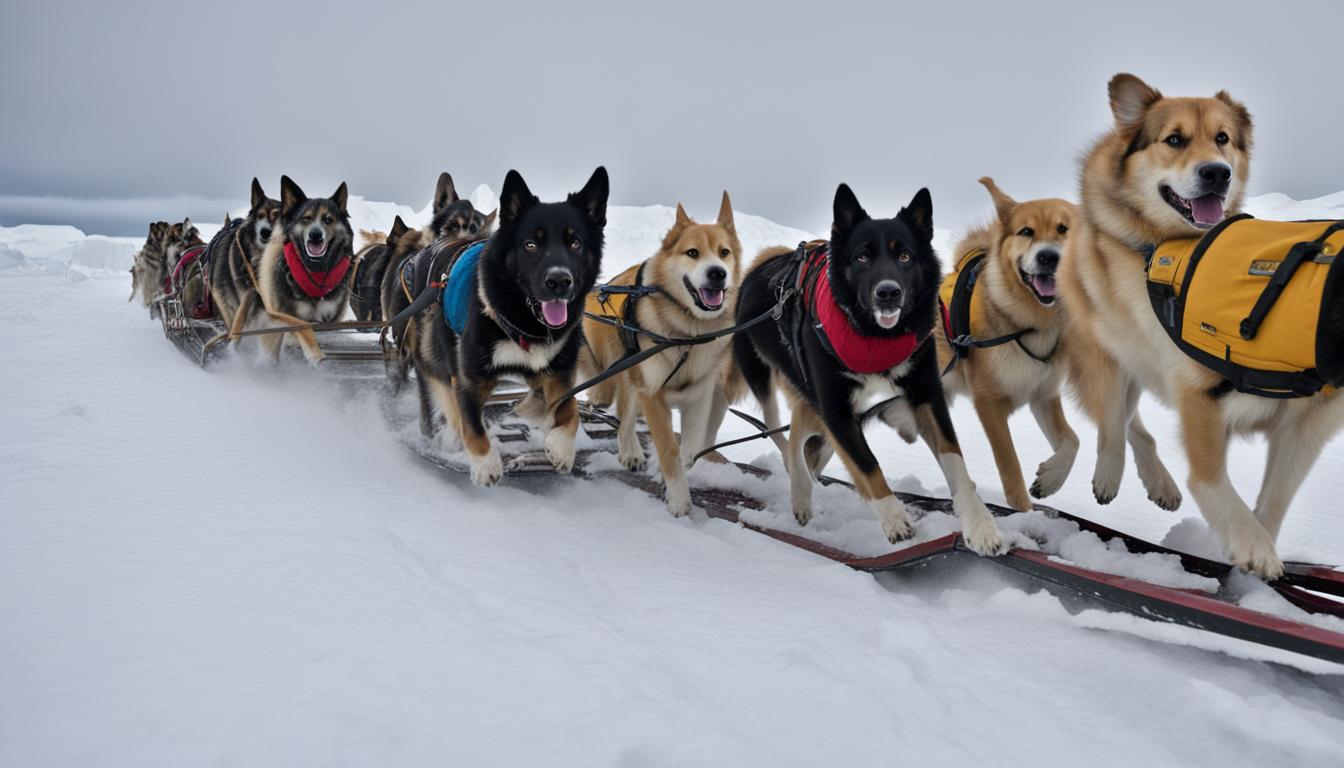Thousands of years ago, dogs evolved from wolves and became our most loyal companions. They have played a significant role in different cultures and civilizations, including the Age of Discovery. Dogs have been valued for their abilities as healers, herders, guardians, and guides. One example is the Singing Dog of New Guinea, which is believed to be descended from an ancient and mysterious wild dog. Dogs have been essential companions for explorers and have contributed to shaping history during the Age of Discovery. Dogs played a crucial role in the expeditions of famous explorers such as Christopher Columbus and Ferdinand Magellan. Through DNA evidence, scientists are trying to trace the birthplace of dogs and understand how they have evolved over time.
Key Takeaways:
- Dogs have been valued companions throughout history, including the Age of Discovery.
- They have played important roles in expeditions, assisting explorers in various tasks.
- The Singing Dog of New Guinea is believed to be descended from an ancient wild dog.
- Famous explorers like Christopher Columbus and Ferdinand Magellan relied on dogs during their expeditions.
- Scientists are studying the DNA of dogs to understand their evolution and origins.
The Role of Dogs in Exploration
In the Age of Discovery, dogs played a crucial role as canine companions in the exploration of new lands and territories. These loyal and skilled animals supported explorers in various ways, making them invaluable members of expeditions.
One of the primary roles of dogs in exploration was their tracking abilities. Dogs possess a keen sense of smell and excellent tracking skills, which allowed them to locate prey, such as game animals, for the explorers. This was particularly important in regions where food sources were scarce, as dogs could lead the way to potential sources of sustenance.
Different dog breeds were utilized during the Age of Discovery depending on the tasks required. For example, Mastiffs were known for their strength and were often employed for guarding the explorers and their camps. Portuguese Water Dogs, on the other hand, were skilled swimmers and were utilized in maritime expeditions.
The Role of Dogs in Exploration
One of the primary roles of dogs in exploration was their tracking abilities. Dogs possess a keen sense of smell and excellent tracking skills, which allowed them to locate prey, such as game animals, for the explorers. This was particularly important in regions where food sources were scarce, as dogs could lead the way to potential sources of sustenance.
| Dog Breed | Main Role in Exploration |
|---|---|
| Mastiff | Guarding the explorers and their camps |
| Portuguese Water Dog | Assisting in maritime expeditions |
In addition to their tracking abilities, dogs also provided companionship and emotional support to the explorers during long and arduous journeys. The presence of dogs helped alleviate feelings of loneliness and provided a source of comfort in challenging environments.
The role of dogs in exploration cannot be overstated. From their tracking abilities to their strength and companionship, dogs were vital to the success of many expeditions during the Age of Discovery. These remarkable animals left their pawprints on history, forever remembered for their contributions to shaping the world through exploration.
Notable Explorer Dogs of the Age of Discovery
During the Age of Discovery, several dogs gained fame for their remarkable contributions to exploration. These canine companions accompanied famous explorers on their daring journeys, demonstrating their loyalty and bravery.
Seaman – The Newfoundland Adventure Dog
One notable explorer dog of the Age of Discovery was Seaman, a brave and intelligent Newfoundland. Seaman embarked on the famous expedition led by Meriwether Lewis and William Clark, known as the Lewis and Clark Expedition. From 1804 to 1806, Seaman accompanied the team on their quest to explore and map the newly acquired western territories of the United States.
Seaman played a vital role in the success of the expedition. He served as a guard, scout, and even a hunting companion. His strength and swimming abilities were particularly valuable during river crossings. Seaman’s loyalty and companionship provided comfort and emotional support to the explorers during their challenging journey. His presence was cherished and immortalized in the expedition’s journals.
Ziryab – The Faithful Saluki
Ziryab, a Saluki, was another historic dog in the Age of Discovery. He accompanied the renowned Moroccan explorer Ibn Battuta on his extensive travels across the Islamic world during the 14th century. Ziryab’s unwavering loyalty and agility made him an invaluable companion on Ibn Battuta’s explorations.
As they traversed deserts, mountains, and cities, Ziryab’s acute senses and tracking abilities were instrumental in ensuring the safety of his human companion. Ziryab’s presence provided Ibn Battuta with a loyal friend and a source of comfort in unfamiliar lands. Together, they ventured into the unknown and left their mark on the history of exploration.
These notable explorer dogs, Seaman and Ziryab, among others, exemplify the significant role that dogs played during the Age of Discovery. Their unwavering loyalty, intelligence, and companionship made them vital members of their respective expeditions, supporting and assisting their human counterparts in their quest for new discoveries.

Conclusion
Dogs have been your loyal companions and vital members of expeditions throughout the Age of Discovery. Their tracking abilities, strength, and companionship have been invaluable to explorers in their quest for new lands and discoveries. Whether it’s the Singing Dogs of New Guinea or the famous explorer dogs of the past, these incredible animals have left their pawprints on history.
Today, we continue to cherish and appreciate the significant role that dogs have played in shaping the world. Their unwavering loyalty and dedication have touched the lives of countless explorers and adventurers. From guarding camps to providing emotional support during long and challenging journeys, dogs have been steadfast companions to those who dared to venture into the unknown.
It is awe-inspiring to think about the countless ways in which dogs have contributed to the Age of Discovery. As we reflect on their remarkable abilities and unwavering loyalty, let us not forget to honor these incredible animals who have stood by our side throughout history.
FAQ
How did dogs contribute to the Age of Discovery?
Dogs played a vital role in the Age of Discovery, serving as companions, trackers, and guardians for explorers. They helped locate and hunt for food, provided emotional support during long journeys, and ensured the safety of the expedition camps.
What tasks did dogs perform during explorations?
Dogs were utilized for various tasks depending on their breed and abilities. Some breeds, like the Mastiff, were used for guarding the explorers and their camps, while others, like the Portuguese Water Dog, were skilled swimmers and used in maritime expeditions. They also helped with tracking, hunting, and providing companionship.
Were there any famous dogs in the Age of Discovery?
Yes, there were several famous explorer dogs during that time. One notable example is Seaman, a Newfoundland who accompanied Meriwether Lewis and William Clark on their famous expedition across North America. Another famous explorer dog was Ziryab, a Saluki who traveled with Ibn Battuta through the Islamic world.
How did dogs contribute to the success of expeditions?
Dogs provided valuable support to explorers by using their tracking abilities to locate food, guarding the camps, and offering companionship during challenging journeys. Their presence and skills were instrumental in ensuring the success of many expeditions.
What role do dogs play in exploration today?
Dogs continue to be important in exploration today, particularly in search and rescue operations, as well as in scientific research. Their keen sense of smell, agility, and loyalty make them valuable companions and contributors to modern-day exploration.





